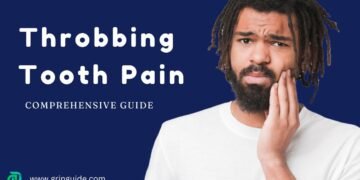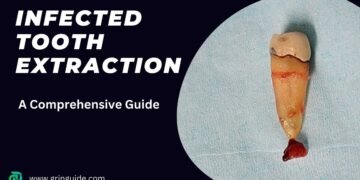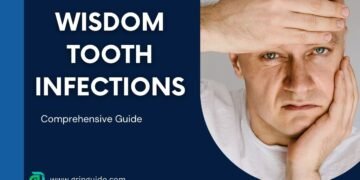Table of Contents
When it comes to oral hygiene, dental flossing plays a crucial role in maintaining healthy teeth and gums.
In this comprehensive guide, we will delve into the importance of flossing, its history and evolution, understanding dental floss, and the benefits it offers for oral health.
Understanding Dental Floss
Dental floss is a thin, soft thread used to remove food and plaque from between the teeth. It comes in various types, including waxed, unwaxed, tape, and more.
Waxed floss is coated with a layer of wax, making it easier to slide between teeth, especially those with tight spaces. On the other hand, unwaxed floss is thinner and may fit more easily into closely spaced teeth.
Dental tape, a broader type of floss, is suitable for people with wider gaps between their teeth.
Manufacturers use different materials to make dental floss, including nylon, Teflon, and silk.
- Nylon floss is one of the most common types and is available in both waxed and unwaxed varieties.
- Teflon floss, also known as PTFE floss, is shred-resistant and slides easily between teeth.
- Silk floss, made from natural silk fibers, provides a smooth and comfortable flossing experience.
Benefits of Flossing
Flossing is an essential component of oral hygiene, as it helps to remove plaque and food particles from areas that a toothbrush can’t reach. By regularly flossing, you can effectively prevent the buildup of plaque, which can lead to various dental issues.
One of the primary benefits of flossing is its role in preventing gum disease. Plaque buildup along the gum line can cause inflammation, leading to gingivitis and, if left untreated, more advanced stages of periodontal disease.
Flossing helps to remove this plaque, reducing the risk of gum inflammation and maintaining healthy gums.
Additionally, flossing plays a crucial role in preventing tooth decay. Food particles and bacteria that remain between the teeth can contribute to the formation of cavities.
By flossing, you can dislodge these particles and reduce the risk of tooth decay, helping to maintain the overall health of your teeth.
Flossing also contributes to fresh breath by removing food debris and reducing the buildup of bacteria in the mouth. This can be particularly beneficial for individuals who struggle with persistent bad breath or halitosis.
Furthermore, flossing can help to prevent the development of tartar, a hard, calcified deposit that forms on the teeth. Tartar can only be removed by a professional dental cleaning, and its buildup can lead to more serious dental issues if left untreated.
The Importance of Flossing for Overall Health
The benefits of flossing extend beyond just oral health; it can also have a significant impact on overall well-being.
Numerous studies have established a connection between poor oral hygiene, including a lack of flossing, and various systemic health conditions.
One of the key links between flossing and overall health is the relationship between gum disease and cardiovascular health. Untreated gum disease can lead to chronic inflammation, which has been associated with an increased risk of heart disease, stroke, and other cardiovascular problems.
By regularly flossing and maintaining healthy gums, individuals can potentially lower their risk of these serious health conditions. Additionally, poor oral hygiene has been linked to an increased risk of respiratory infections, such as pneumonia.
The bacteria that can accumulate in the mouth due to a lack of flossing can potentially be aspirated into the lungs, leading to respiratory complications, especially in vulnerable populations, such as the elderly or individuals with weakened immune systems.
Furthermore, research has suggested a connection between poor oral health and the development of certain chronic conditions, such as diabetes and Alzheimer’s disease.
While the exact mechanisms are still being studied, the inflammation and bacterial imbalances associated with poor oral hygiene may play a role in the progression of these diseases.
By recognizing the importance of flossing and integrating it into a comprehensive oral hygiene routine, individuals can take proactive steps to not only maintain healthy teeth and gums but also potentially reduce their risk of various systemic health problems.
Flossing, as a simple yet effective habit, can have far-reaching impacts on an individual’s overall well-being.
Proper Flossing Technique
Proper flossing technique is essential to ensure maximum effectiveness and to avoid potential harm to your gums. Here are the steps to follow for effective dental flossing:
- Start with about 18 inches of floss, winding most of it around one of your middle fingers, and the rest around the opposite middle finger.
- Gently guide the floss between your teeth, using a gentle rubbing motion to avoid snapping the floss and damaging your gums.
- Once the floss is between your teeth, curve it into a C shape against one tooth, and gently slide it beneath the gum line.
- Gently move the floss up and down, making sure to clean the side of each tooth.
- Repeat this process for all of your teeth, using a clean section of floss for each space between your teeth.
- Be careful not to snap the floss back and forth, as this can cause damage to your gums.
It’s also important to floss at least once a day, preferably before bedtime, to ensure that any food particles and plaque are removed before they have a chance to accumulate overnight.
Flossing Alternatives and Complementary Oral Hygiene Practices
While traditional dental floss remains a popular and effective way to clean between the teeth, there are also a variety of flossing alternatives and complementary oral hygiene practices that can be incorporated into your routine.
One alternative to traditional floss is the use of interdental cleaners, such as interdental brushes or dental picks. These small, specialized brushes or picks are designed to fit between the teeth and can be particularly useful for individuals with wider gaps or dexterity issues that make traditional flossing challenging.
Water flossers, or oral irrigators, are another popular alternative. These devices use a stream of water to dislodge food particles and plaque from between the teeth and along the gum line.

Water flossers can be an effective complement to traditional brushing and flossing, especially for individuals with braces or other dental appliances.
In addition to flossing and flossing alternatives, maintaining a comprehensive oral hygiene routine is crucial for optimal dental health.
This includes regular brushing with a fluoride-containing toothpaste, using mouthwash to help reduce plaque and bacteria, and visiting your dentist for professional cleanings and checkups.
By incorporating a variety of oral hygiene practices, including flossing or its alternatives, you can ensure that your teeth and gums remain healthy and vibrant for years to come.
Best Times to Floss
Many people wonder about the best times to floss for optimal dental health. The general consensus among dental professionals is that it’s best to floss at least once a day, regardless of the time. However, there are certain times that may be more beneficial for flossing.
Flossing in the morning can help remove any plaque or food particles that have accumulated overnight. This can also help freshen your breath and give you a clean feeling to start the day.
Flossing at night is equally important, as it can clear away any debris that has built up throughout the day, preventing potential issues like plaque buildup and gum disease while you sleep.
Frequency of Flossing for Optimal Dental Health
While flossing once a day is the general recommendation, some individuals may benefit from flossing more frequently. For example, people with braces or dental implants may need to floss after each meal to ensure that no food particles get trapped and cause issues.
On the other hand, those with sensitive gums may need to be gentler with their flossing technique and opt for softer, more frequent flossing sessions to prevent irritation.
Flossing for Special Needs
When it comes to flossing for special dental needs such as braces, dental implants, and sensitive gums, it’s essential to adjust your flossing technique accordingly.
For individuals with braces, using a floss threader or a water flosser can be incredibly helpful in navigating around the wires and brackets to remove plaque and debris.
Dental implant recipients should pay extra attention to flossing around the implant to prevent inflammation and infection. Sensitive gums may benefit from softer, ribbon-like floss or water flossers to gently clean between the teeth without causing discomfort.
It’s also important to note that traditional flossing may not be suitable for everyone. In such cases, alternatives like water flossers and interdental brushes can be highly effective in cleaning between the teeth and along the gum line, especially for those who struggle with traditional flossing methods.
Flossing for Children

Teaching children the importance of dental flossing is crucial for their oral health. It is an essential habit that should be instilled from an early age to ensure proper dental hygiene.
Children should be introduced to flossing as soon as their teeth start to touch each other, typically around the age of 2 to 6 years old. Flossing helps to remove food particles and plaque from between the teeth and along the gumline, areas that a toothbrush cannot reach effectively.
By incorporating flossing into a child’s daily routine, parents can play a significant role in preventing cavities and gum disease.
Special Considerations for Elderly Patients
Elderly patients may face unique challenges when it comes to dental flossing. As people age, they may experience dexterity issues, arthritis, or other physical limitations that make it difficult to maneuver floss between their teeth.
In such cases, using floss picks or interdental brushes can be more manageable for elderly individuals. Furthermore, elderly patients are more prone to gum recession and periodontal disease.
Gentle and careful flossing is essential to prevent further damage to the gums. Dental professionals should educate elderly patients on the importance of flossing and provide guidance on proper flossing techniques that are suitable for their individual needs.
Challenges and Solutions
Despite the well-established benefits of flossing, many people still struggle to make it a consistent part of their oral hygiene routine. Understanding and addressing the common challenges associated with flossing can help individuals develop more effective and sustainable flossing habits.
1. Remember to do it
One of the primary challenges people face with flossing is simply remembering to do it. Incorporating flossing into a daily routine, such as immediately after brushing or before bedtime, can help make it a more automatic habit.
Setting reminders or using visual cues, like keeping floss in a prominent location, can also aid in making flossing a consistent part of one’s oral care regimen.
2. Dexterity
Another common issue is the dexterity required to effectively floss. For some individuals, particularly those with limited mobility or physical constraints, traditional flossing can be challenging.
In these cases, using floss holders or interdental brushes can make the process easier and more accessible. Exploring different flossing techniques, such as the “C-shape” method, can also help individuals find an approach that works best for their unique needs.
3. Discomfort
Discomfort or pain associated with flossing is another barrier that many people face. This can be especially true for those with sensitive gums or pre-existing dental conditions.
Starting with a gentle flossing technique, using waxed or soft-tipped floss, and gradually increasing the frequency and intensity can help minimize discomfort and make the process more comfortable over time.
Consulting with a dental professional can also provide personalized guidance on how to floss effectively while minimizing any potential discomfort.
4. motivation
Lack of motivation or perceived importance of flossing is another common challenge. Many people may not fully understand the significant role that flossing plays in maintaining overall oral health.
Educating oneself on the benefits of flossing, such as the prevention of gum disease, tooth decay, and bad breath, can help reinforce the importance of this daily practice.
Seeking support from a dental professional or joining an online community of individuals committed to improving their oral hygiene can also provide the motivation and accountability needed to make flossing a consistent habit.
Myths and Misconceptions about Flossing
There are several myths and misconceptions surrounding the practice of dental flossing. It is important to debunk these myths and provide evidence-based facts to emphasize the significance of flossing in maintaining oral health.
One common myth is that flossing is unnecessary if you brush your teeth thoroughly. However, this is not true. Brushing alone cannot effectively clean the tight spaces between teeth, where plaque and food particles accumulate. Flossing complements brushing by reaching areas that a toothbrush cannot access.
Another myth is that flossing causes gum damage and should be avoided. In reality, when done correctly, flossing does not harm the gums. Improper flossing techniques or using too much force can lead to gum irritation, but with proper guidance, individuals can floss without causing harm to their gums.
Some people believe that flossing is only necessary when food is stuck between the teeth. However, flossing should be a daily habit to prevent the buildup of plaque, which can eventually lead to tooth decay and gum disease. Consistent flossing is key to maintaining optimal oral hygiene.
Evidence-Based Facts Supporting Flossing
Numerous studies and research support the benefits of regular flossing. A study published in the Journal of Clinical Periodontology found that flossing, in addition to toothbrushing, was more effective in reducing plaque and gingivitis compared to toothbrushing alone.
This emphasizes the importance of incorporating flossing into daily oral care routines.
Furthermore, the American Dental Association (ADA) recommends flossing at least once a day to remove plaque and food particles from between the teeth. The ADA also highlights the role of flossing in preventing gum disease and cavities, reinforcing the evidence-based support for this practice.
Integrating Flossing into a Comprehensive Oral Hygiene Routine
Flossing should be an integral part of a comprehensive oral hygiene routine, working in conjunction with other essential practices to maintain optimal dental health.
Alongside regular brushing, flossing plays a crucial role in removing plaque and food debris from hard-to-reach areas of the mouth. By combining these two practices, individuals can effectively clean both the surfaces of their teeth and the spaces in between, ensuring a thorough and comprehensive clean.
In addition to brushing and flossing, it is also important to incorporate regular dental check-ups and cleanings into one’s oral hygiene routine.
Professional dental cleanings can remove any stubborn plaque or tartar buildup that may have accumulated, complementing the work done at home through brushing and flossing.
Furthermore, maintaining a balanced and nutritious diet can also contribute to overall oral health. Certain foods and beverages, such as sugary or acidic items, can increase the risk of tooth decay and gum disease.
By making mindful dietary choices, individuals can support the health of their teeth and gums, further enhancing the benefits of their flossing and brushing routine.
By integrating flossing into a comprehensive oral hygiene regimen, including brushing, professional dental care, and a balanced diet, individuals can achieve and maintain optimal oral health, reducing the risk of dental problems and promoting a lifetime of healthy smiles.
The History and Evolution of Dental Floss
The concept of dental floss has been around for centuries, with early forms dating back to ancient civilizations. The first documented use of floss-like materials was found in prehistoric times, where people used horsehair, animal sinew, or plant fibers to remove food debris from between their teeth.
In the 19th century, Dr. Levi Spear Parmly, a New Orleans dentist, is credited with recommending the regular use of silk floss for oral hygiene.
He recognized the importance of cleaning between the teeth, as this area was often overlooked by a toothbrush alone. However, it wasn’t until the early 20th century that dental floss became commercially available.
In 1882, the Codman and Shurtleft Company patented the first commercial dental floss product, made from silk.
Over the years, the materials and design of dental floss have evolved, with the introduction of nylon, Teflon, and other synthetic fibers, as well as the development of waxed and flavored varieties to improve user experience and effectiveness.
Summary
In conclusion, dental flossing is a fundamental aspect of maintaining optimal oral health. By incorporating flossing into your daily routine and selecting the right type of floss for your needs, you can effectively prevent plaque buildup, protect gum health, and complement the cleaning achieved through brushing.
Developing a consistent flossing habit is a proactive step towards preventing dental issues and ensuring a healthy, confident smile for years to come.
FAQs
-
What is Dental Flossing and Why is it Important?
Dental flossing is the process of using a thin piece of string to remove food and plaque from between the teeth. This is important because toothbrushes cannot reach these areas effectively, and failure to clean between the teeth can lead to plaque buildup, which can cause cavities, gum disease, and bad breath. By flossing regularly, you can significantly reduce the risk of these oral health issues.
-
Do Dentists Recommend Flossing?
Yes, dentists overwhelmingly recommend flossing as an essential part of a good oral hygiene routine. The American Dental Association (ADA) and the majority of dental professionals advocate for daily flossing to maintain healthy teeth and gums. Flossing helps to remove plaque and food particles that can lead to tooth decay and gum disease, making it a crucial practice for overall oral health.
-
How Often Should You Floss?
It is generally recommended to floss at least once a day. This daily flossing helps to prevent the buildup of plaque and reduces the risk of gum disease and tooth decay. However, some individuals may benefit from flossing more frequently, especially if they have a higher risk of developing dental issues. Your dentist can provide personalized recommendations based on your specific oral health needs.
-
What is the Correct Way to Floss?
The correct way to floss involves using a piece of floss that is around 18 inches long. Wind the ends around your fingers, leaving a few inches of taut floss to work with. Gently guide the floss between your teeth using a back-and-forth motion, making sure to curve it around each tooth in a C shape to reach the area just below the gumline. Be careful not to snap the floss into your gums, as this can cause irritation. Use a clean section of floss for each tooth to avoid transferring bacteria from one tooth to another.
-
Do I Floss Before or After Brushing?
There is no hard and fast rule about whether you should floss before or after brushing. The most important thing is to do a thorough job of both. Some people find it easier to floss before brushing so that any dislodged food particles can be brushed away, while others prefer to floss after brushing to leave fluoride from the toothpaste between the teeth. Ultimately, the sequence is less important than the thoroughness of the cleaning, so choose the order that works best for you and allows you to give proper attention to both flossing and brushing.











